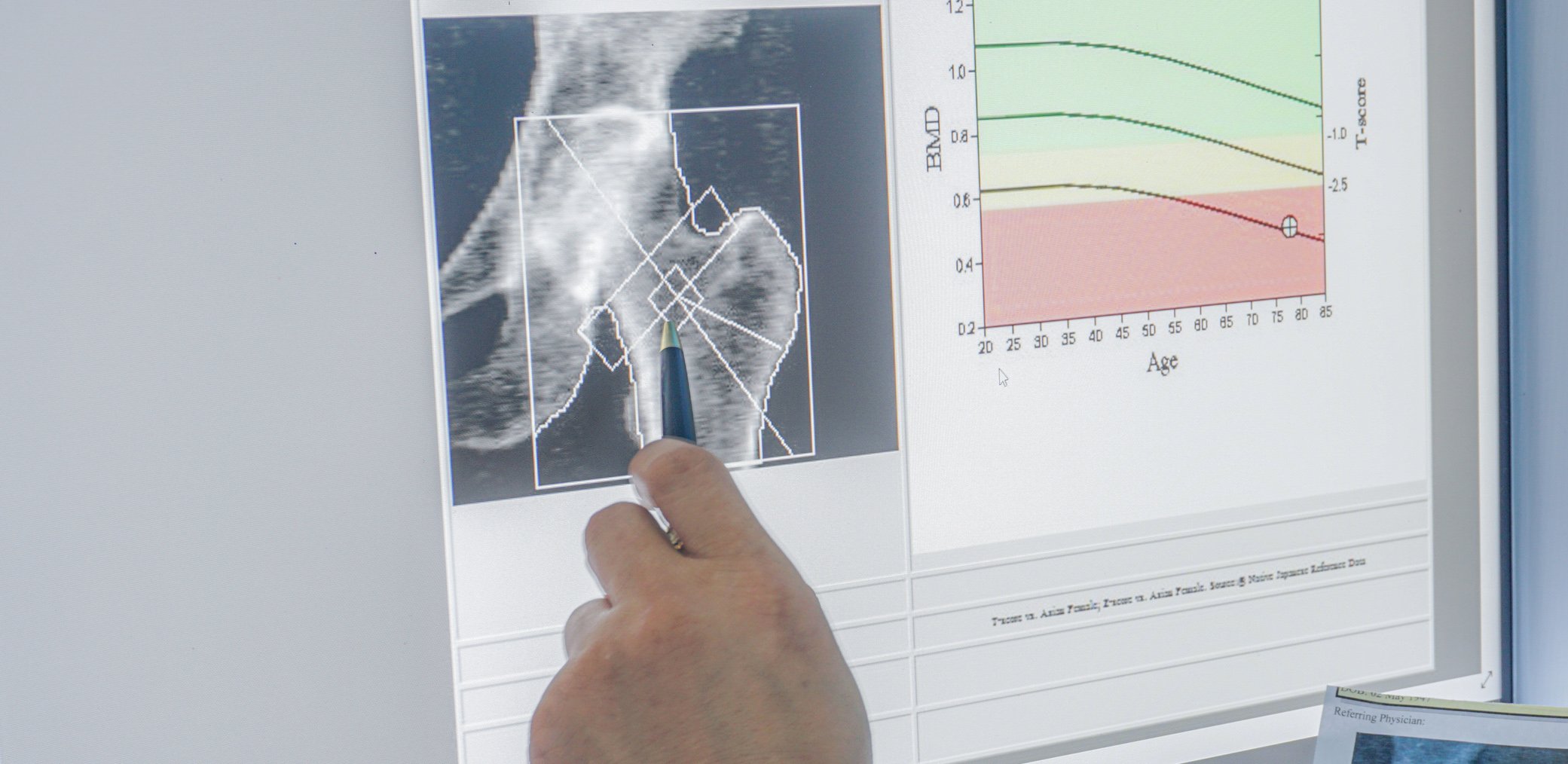A widespread chronic disease, affecting a majority of young adults, causes a vehement financial and societal interest to develop effective and tolerable therapies. In 2017 alone, two new monoclonal antibodies received approval from Swissmedic for the treatment of multiple sclerosis in Switzerland.
A widespread chronic disease, affecting a majority of young adults, causes a vehement financial and societal interest to develop effective and tolerable therapies. In 2017 alone, two new monoclonal antibodies received approval from Swissmedic in Switzerland for the treatment of multiple sclerosis. Both therapies are potent agents in terms of efficacy (MRI activity and clinical disease activity). While the anti-CD25 antibody daclizumab (Zinbryta®) was included in the list of specialties by the FOPH on March 1, 2017 [1], the inclusion of the B-cell depleting CD20 antibody ocrelizumab (Ocrevus®) [2], which was approved in September 2017, was still awaited until March 1, 2018. . Ocrelizumab is the first drug that can effectively contribute to a slowing of disease progression in the primary progressive form of the disease (PPMS) [3].
Until now, treatment options for MS patients with highly active disease progression have been limited to the substances alemtuzumab (Lemtrada®) and natalizumab (Tysabri®). While both therapies are well effective and basically well tolerated. However, the use of alemtuzumab is limited by the frequent (up to 50%) and delayed occurrence of secondary autoimmune phenomena and of natalizumab by the possible opportunistic infection with the JC virus – progressive multifocal leukoencephalopathy (PML). in patients with serological evidence of anti-JC virus antibodies (the more clearly detectable and the longer the treatment duration, the higher the risk (up to approx. 1:80) [4,5]) limited. Therefore, due to the positive data for the precursor of ocrelizumab, rituximab (MabThera®) [6,7], this therapeutic strategy has already been frequently resorted to as an off-label use.
Role of B cells in MS
The pathogenesis of multiple sclerosis remains incompletely understood. The importance of the T-cell mediated immune response, particularly the role of CD4+ T lymphocytes, has been known for some time [8,9]. In MS patients, these cells show antigen-specific responses to different proteins of the myelin sheath. The increasing interest in the involvement of B lymphocytes in the pathogenesis of MS has contributed to some weighty new findings. The intrathecally synthesized immunoglobulins (oligoclonal bands, OKB) detectable in the CSF in a large proportion of affected individuals can only be explained by the presence of B lymphocytes in the CSF space [10]. OKB correlate with more severe disease progression or advanced disease stage [11]. In addition, at sites with cortical demyelination – an aspect of MS that is often forgotten despite great relevance for neurocognitive deficits [12] due to MR imaging limitations – so-called tertiary lymphoid organs are often found at the meninges, which are structurally organized comparable to secondary lymphoid organs (incl. antibody-producing plasma cells) [12–14]. Another important role is played by B lymphocytes in their cytokine-mediated influence on the immune system [10,15]. This prominence became evident when B-cell depleting therapies that did not affect CD20-negative plasma cells and thus the antibody-mediated effects of B lymphocytes nevertheless showed significant therapeutic effects [16].
Interleukin-2 signaling pathway targeting (daclizumab).
Daclizumab is a humanized monoclonal antibody against CD25, the α-subunit of the IL-2 receptor [17]. The α-subunit is located on the surface of activated T cells and together with the β- and γ-subunits forms a receptor with up to 100× affinity for IL-2 [18]. Thus, daclizumab appears to selectively destroy those T lymphocytes that are actively involved in the inflammatory pathogenesis of MS.
The pivotal study [17] compared once-monthly subcutaneous injection of 150 mg daclizumab with once-weekly intramuscular injection of 30 mcg interferon β-1a (Avonex®). The primary endpoint was the annual relapse rate, with those patients treated with daclizumab experiencing significantly fewer relapses than in the control group (0.22 vs. 0.39). Also, significantly fewer (54%) new or enlarged T2 lesions were seen on follow-up MRI imaging at 96 weeks. The combined endpoint NEDA (no evidence of disease activity), defined by the absence of evidence of disease progression (no clinical or anamnestic progression, no new imaging findings; NEDA 3), was achieved significantly more often in the daclizumab group at 96 weeks (24.6% vs. 14.2%) [19].
Based on these positive trial data, daclizumab was approved for the treatment of relapsing forms of MS. Following new evidence from the extension studies of cases of fulminant liver failure in more than 1% of those treated and an associated death, both the FDA and EMA have imposed a restriction on the indication for treatment so that daclizumab can now only be used in the U.S. and Europe as a third-line treatment, i.e., after two failed treatment attempts with other commonly used immunomodulatory drugs. Although Swissmedic did not initially formulate a restriction to this effect, a warning letter (DHPC) was published drawing attention to the severe cases of liver failure. This was finally followed by an update on Jan. 31, 2018, in which daclizumab has now also been downgraded to a third-line therapy in Switzerland. On March 02, 2018, the manufacturer Biogen informed Swissmedic of eight cases of meningitis/meningoencephalitis during therapy with daclizumab and revoked the marketing authorization of daclizumab (Zinbryta®) in Switzerland and internationally. Swissmedic recommends:
- No new treatments with Zinbryta® should be initiated.
- Physicians who have prescribed Zinbryta® should quickly contact their patients and initiate a change in medication.
- Patients who are currently being treated with Zinbryta® should not interrupt therapy on their own initiative, but should contact their treating physician.
- If the neurological condition worsens, consider inflammation of the central nervous system.
- Because of the risk of liver damage, the physician and patient must continue to monitor for signs of liver damage for six months after discontinuation, and liver values must be checked at least monthly.
Since it is known that therapy-induced, secondary autoimmune phenomena can occur with alemtuzumab, such side effects are not spared even with treatment with daclizumab. Regulatory and T helper cells destroyed by therapy are thought to play an important role not only in immune defense but also in autoantigen tolerance [20,21]. However, it is only in recent years that the dual role of IL-2 in addition to the immune response in signaling pathways of T cell-mediated immune tolerance has been understood in particular [22]. This could explain the frequency of therapy-mediated autoimmune phenomena of these drugs.
Targeting B cells (ocrelizumab).
Ocrelizumab is the humanized successor to rituximab, and it also binds to CD20+ B cells, leading to depletion of all mature B cells. Plasma cells and Pro-B cells are omitted. While the exact significance of how this B-cell depletion affects various immunological signaling pathways is not yet conclusively understood, the results of the pivotal studies speak for themselves:
In the two pivotal studies (two identical studies, OPERA I and II) [23] on relapsing-remitting MS with ocrelizumab (the comparison group was treated with interferon β-1a, Rebif®, 3× 44 mcg/week in each case), a relapse rate reduction of 46% and 47%, respectively, was shown compared to interferon. While there is a roughly equivalent effect here compared with daclizumab, the effect is striking with respect to the one secondary endpoint, the number of new or enlarged T2 MRI lesions. Compared to interferon, there were approximately 80% fewer new lesions, and this trend was again clearly accentuated from week 24 onwards (approximately 95% fewer new lesions). The combined endpoint NEDA was achieved significantly more often in the ocrelizumab group at 96 weeks (47.9/47.%/47,5% vs. 29.2/25%/25,1%) [24]. It should be noted that the comparability of study data on different substances is generally difficult due to the different study populations.
Hope for PPMS
After the OLYMPUS study with rituximab [25] for the treatment of primary progressive multiple sclerosis missed the primary endpoint – confirmed disability progression – but subgroup analysis showed an effect in younger patients with inflammatory disease activity, these findings were incorporated into the study design of the ORATORIO trial, which investigated the effect of ocrelizumab on disease progression in PPMS [3]. The primary endpoint was the duration to confirmed disability progression (CDP) over 12 weeks, i.e., permanent worsening in the Expanded Disability Status Scale (EDSS). The treatment group significantly delayed CDP by 24% compared with placebo. This was the basis for the approval of the substance. This 24% slowing of disability progression is a first step and opens new hopes for a previously untreatable form of the disease. However, in most cases, progression is merely delayed and not stopped. In Switzerland, the indication for treatment does not contain any restrictions with regard to the duration of the disease, the degree of disability and evidence of any disease activity. However, the benefit of therapy is likely to be particularly evident in younger patients who are only mildly disabled and clearly progressive/active. Objectification of disease progression during therapy is likely to be a challenge, particularly in primary progressive patients. For this purpose, we recommend the systematic use of an assessment of walking ability, motor and coordinative function of the upper extremity, and congnition tests.
Take-Home Messages
- Two new, highly effective monoclonal antibody therapies – ocrelizumab and daclizumab – for the treatment of relapsing-remitting multiple sclerosis (MS) reached Switzerland in 2017.
- B cells are gaining importance in understanding the pathophysiology of MS and in its treatment.
- For patients with primary progressive MS, an official treatment option exists for the first time.
Literature:
- Specialty List (SL) – Preparations. www.xn--spezialittenliste-yqb.ch/ShowPreparations.aspx?searchType=ATCCODE&searchValue=L04AC01 (accessed 2/13/2018).
- Ocrevus®, concentrate for the preparation of an infusion solution (ocrelizumabum). www.swissmedic.ch/swissmedic/de/home/humanarzneimittel/authorisations/new-medicines/ocrevus_konzentrat_zur_herstellung_einer_infusionsloesung_ocrelizumabum.html (accessed 2/13/2018).
- Montalban X, Hauser SL, Kappos L, et al: Ocrelizumab versus placebo in primary progressive multiple sclerosis. N Engl J Med 2017; 376: 209-220.
- McGuigan C, Craner M, Guadagno J, et al: Stratification and monitoring of natalizumab-associated progressive multifocal leukoencephalopathy risk: recommendations from an expert group. J Neurol Neurosurg Psychiatry 2016; 87: 117-125.
- Ho P-R, Koendgen H, Campbell N, et al: Risk of natalizumab-associated progressive multifocal leukoencephalopathy in patients with multiple sclerosis: a retrospective analysis of data from four clinical studies. Lancet Neurol 2017; 16: 925-933.
- Castillo-Trivino T, Braithwaite D, et al: Rituximab in Relapsing and Progressive Forms of Multiple Sclerosis: A Systematic Review. PLOS ONE 2013; 8: e66308.
- Alping P, Frisell T, Novakova L, et al: Rituximab versus fingolimod after natalizumab in multiple sclerosis patients. Ann Neurol 2016; 79: 950-958.
- Wu GF, Alvarez E: The immuno-pathophysiology of multiple sclerosis. Neurol Clin 2011; 29: 257-278.
- Viglietta V, Baecher-Allan C, et al: Loss of Functional Suppression by CD4+CD25+ Regulatory T Cells in Patients with Multiple Sclerosis. J Exp Med 2004; 199: 971-979.
- Staun-Ram E, Miller A: Effector and regulatory B cells in multiple sclerosis. Clin Immunol 2017; 184: 11-25.
- Dobson R, Ramagopalan S: Cerebrospinal fluid oligoclonal bands in multiple sclerosis and clinically isolated syndromes: a meta-analysis of prevalence, prognosis and effect of latitude. J Neurol Neurosurg Psychiatry 2013; 84: 909-914.
- Lucchinetti CF, Popescu BFG, Bunyan RF, et al: Inflammatory cortical demyelination in early multiple sclerosis. N Engl J Med 2011; 365: 2188-2197.
- Magliozzi R, Howell OW, Reeves C, et al: A gradient of neuronal loss and meningeal inflammation in multiple sclerosis. Ann Neurol 2010; 68: 477-493.
- Pikor NB, Prat A, Bar-Or A, Gommerman JL: Meningeal Tertiary Lymphoid Tissues and Multiple Sclerosis: A Gathering Place for Diverse Types of Immune Cells during CNS Autoimmunity. Front Immunol 2016; 6. DOI:10.3389/fimmu.2015.00657.
- Li R, Rezk A, Healy LM, et al: Cytokine-Defined B Cell Responses as Therapeutic Targets in Multiple Sclerosis. Front Immunol 2016; 6. DOI:10.3389/fimmu.2015.00626.
- Büdingen H-C von, et al: Update on the Autoimmune Pathology of Multiple Sclerosis: B-Cells as Disease-Drivers and Therapeutic Targets. Eur Neurol 2015; 73: 238-246.
- Kappos L, Wiendl H, Selmaj K, et al: Daclizumab HYP versus Interferon Beta-1a in Relapsing Multiple Sclerosis. http://dx.doi.org/10.1056/NEJMoa1501481. 2015; published online Oct 7. DOI:10.1056/NEJMoa1501481.
- Liao W, Lin J-X, Leonard WJ: IL-2 family cytokines: new insights into the complex roles of IL-2 as a broad regulator of T helper cell differentiation. Curr Opin Immunol 2011; 23: 598-604.
- Kappos L, Havrdova E, Giovannoni G. et al: No evidence of disease activity in patients receiving daclizumab versus intramuscular interferon beta-1a for relapsing-remitting multiple sclerosis in the DECIDE study. Mult Scler J 2017; 23: 1736-1747.
- Oh U, Blevins G, Griffith C, et al: Regulatory T Cells are Reduced During Anti-CD25 Antibody Treatment of Multiple Sclerosis. Arch Neurol 2009; 66: 471-479.
- von Kutzleben S, et al.: Depletion of CD52-positive cells inhibits the development of central nervous system autoimmune disease, but deletes an immune-tolerance promoting CD8 T-cell population. Implications for secondary autoimmunity of alemtuzumab in multiple sclerosis. Immunology 2017; 150: 444-455.
- Cheng G, Yu A, Malek TR: T-cell tolerance and the multi-functional role of IL-2R signaling in T-regulatory cells. Immunol Rev 2011; 241: 63-76.
- Hauser SL, Bar-Or A, Comi G, et al: Ocrelizumab versus interferon beta-1a in relapsing multiple sclerosis. N Engl J Med 2017; 376: 221-234.
- Traboulsee A, Arnold D, Bar-Or A, et al: Ocrelizumab No Evidence of Disease Activity (NEDA) Status at 96 Weeks in Patients with Relapsing Multiple Sclerosis: Analysis of the Phase III Double-Blind, Double-Dummy, Interferon beta-1a-Controlled OPERA I and OPERA II Studies (PL02.004). Neurology 2016; 86. http://n.neurology.org/content/86/16_Supplement/PL02.004.abstract.
- Hawker K, O’Connor P, Freedman MS, et al: Rituximab in patients with primary progressive multiple sclerosis: results of a randomized double-blind placebo-controlled multicenter trial. Ann Neurol 2009; 66: 460-471.
InFo NEUROLOGY & PSYCHIATRY 2018; 16(2): 15-18.











